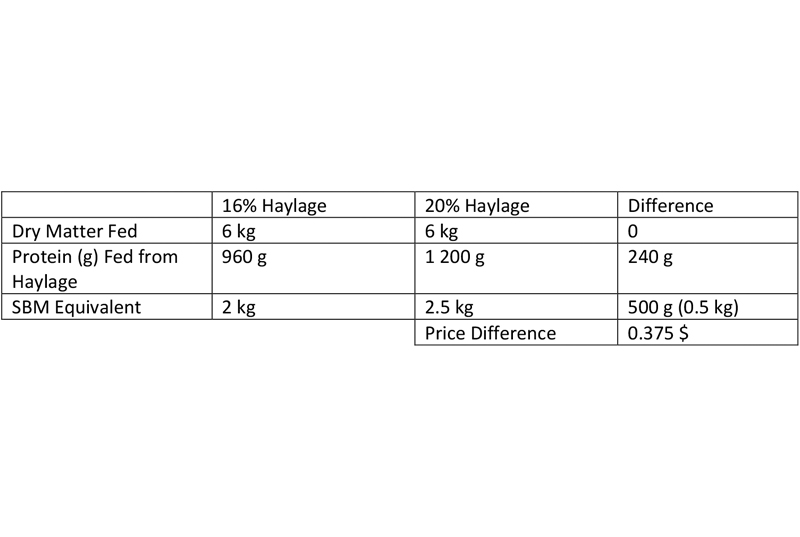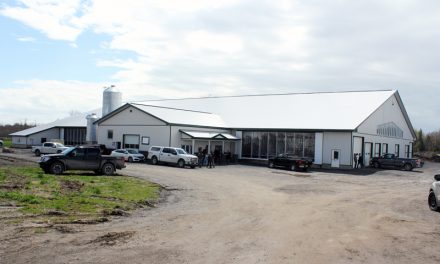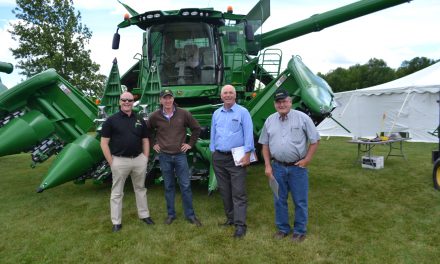Table 1: Summary of the economic impact of haylage quality. Coutesy Photo
By Jakob Vogel agr.
AgriNews Contributor
As with most springs, the rush for cropping often blindsides dairy producers with how quickly first cut haylage comes along. However, along with being blindsided, many producers are often caught unprepared and can quickly loose out on high quality protein that is easily produced right in their backyards.
More importantly with markets still on the rise, albeit, slower than previous months have shown, the importance in narrowing the harvest window for haylage is the easiest way to decrease the cost of purchased feeds for this coming season.
As to the question of when the optimal time is to chop, the answer can vary based on the contents of the stand, but it’s often earlier than expected in order to optimize the quality of the feed being used for the lactating herd.
Let us breakdown economic impact of working with a 16 per cent haylage and a 20 per cent haylage and assume the producer is feeding 15 kg per heard at 40 per cent dry matter.
First, we need to determine the difference in total protein that is being supplied from the different haylages (table 1), which in these examples, we are looking at a total of 240 g of protein more from the 20 per cent haylage. Once the amount of protein supplied is converted, we can then convert the difference in crude protein supplied into a common market equivalent (in this case soybean meal – SBM 48%).
When we skip to the final economic impact between these two haylages, we end up with 37.5 cents per cow per day difference assuming 750$/MT. We can extrapolate the cost difference on an average herd size of 72 cows, which equals roughly 27 dollars per day.
There are some considerations to be kept in mind when comparing these scenarios and the first one is related back to the digestibility of the forages and the amino acid profile of the different forages within the stand. In the example explained above (and summarized in the table 1) the assumption of consistent digestibility of forages were considered in order to generate a comparison.
Although the final impact could vary depending on the inventory requirement and the target group to be fed, the overall principle remains the same. A discussion that I would encourage all readers to have with their nutritionists would be to determine opportunities to improve forage quality before considering forcing in other ingredients that are available on the farm such as raw/roasted soybeans or other mixed grains that may have to be forced into the diet and could lead to other bottlenecks’ nutritionally (oils, speed of digestion and digestibility of the ingredient).












